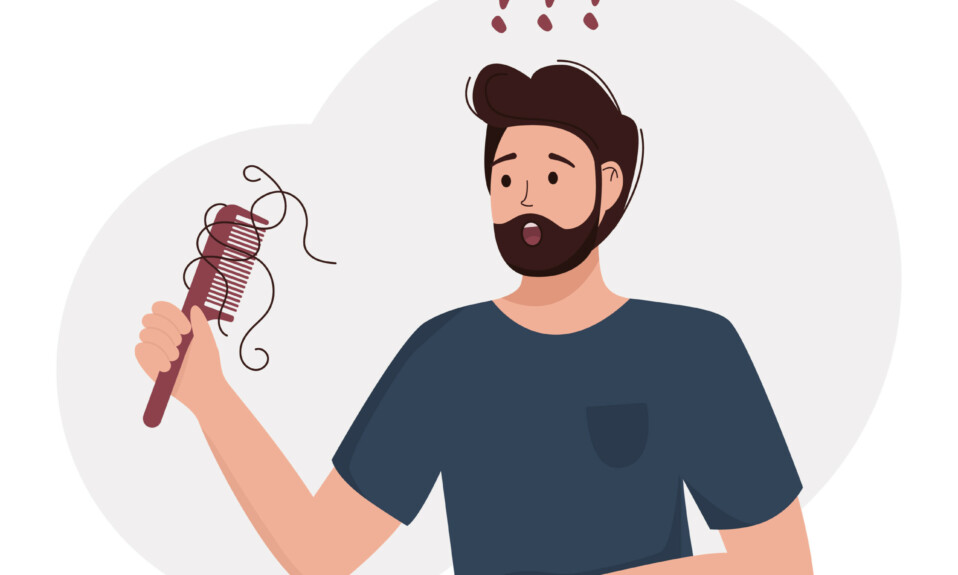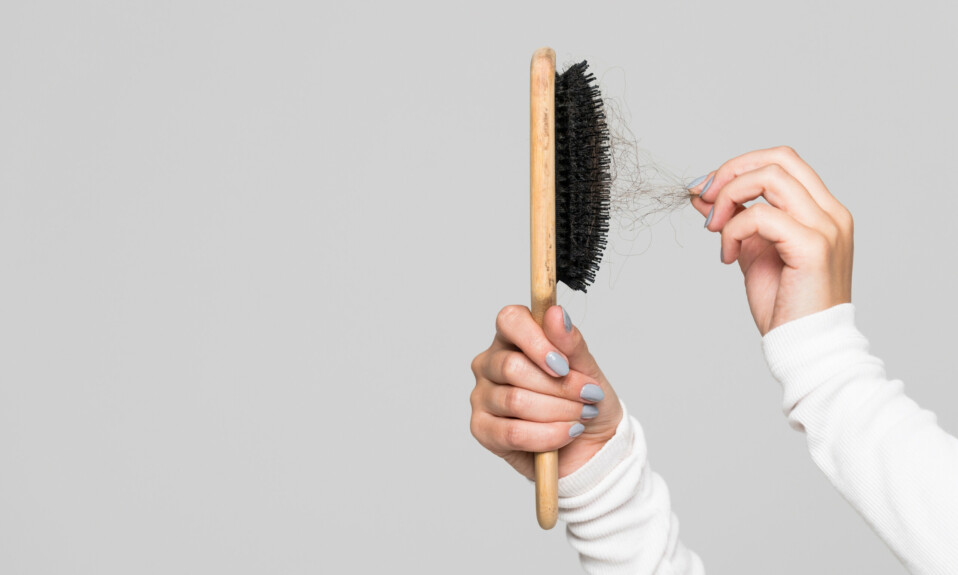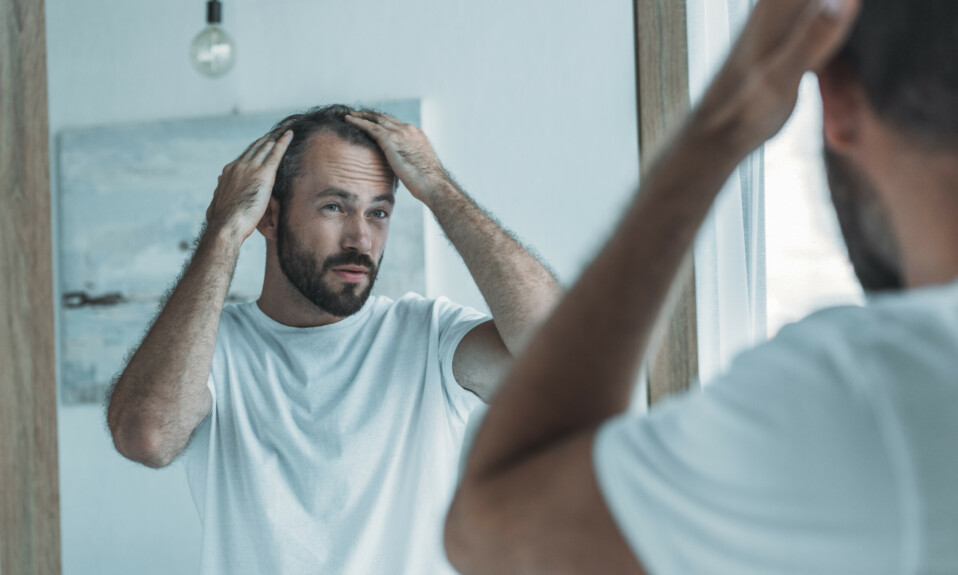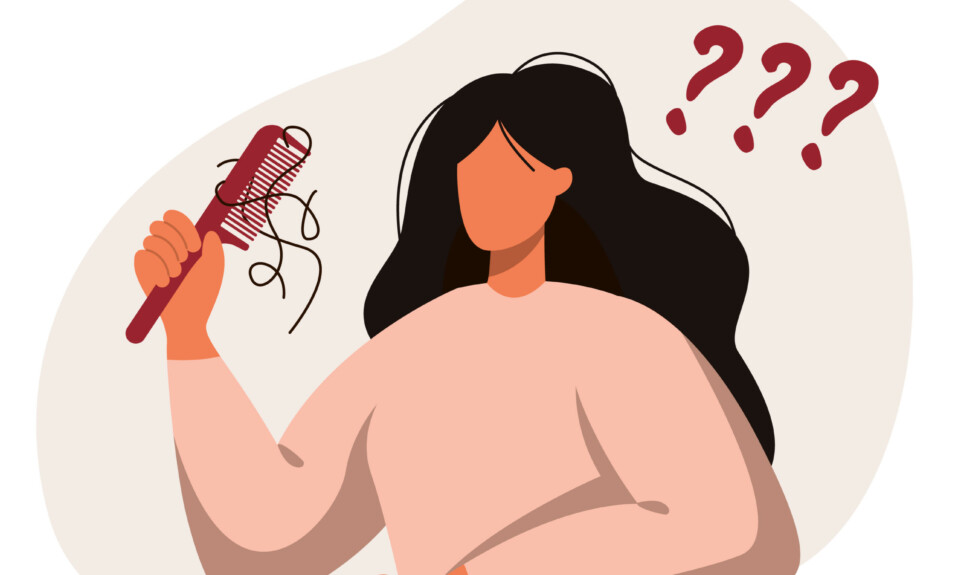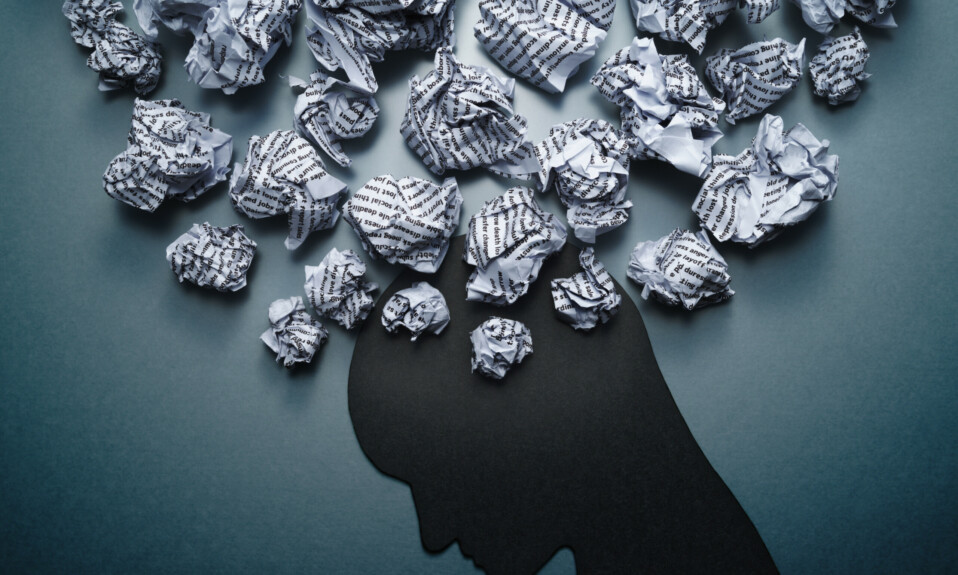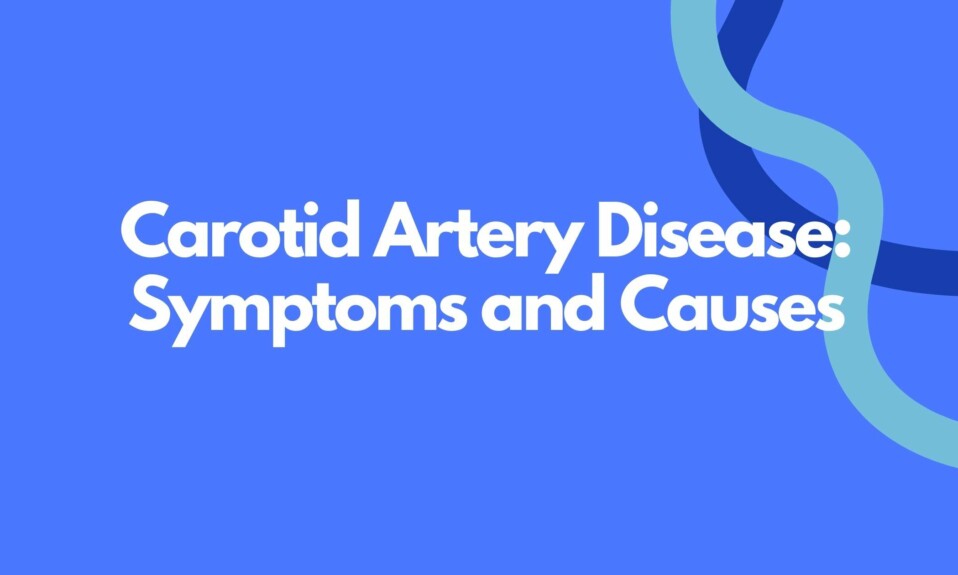Table of Contents Hide
Hair loss is a stressful event in an individual’s life and can be emotionally taxing. Hair loss affects over 80 million Americans. It’s so common, in fact, that by the age of 35, two-thirds of men will experience some form of hair loss. And 40% of Americans who experience hair loss are women.
There are different reasons for hair loss and thinning hair – genetics, nutritional deficiencies, scalp infections, stress, etc. Medications and invasive procedures are available as treatment options, but there are several natural products and home remedies that are safe and effective for treating hair loss.
What Is Hair Loss?
An individual loses approximately 50-100 hair strands from the scalp each day. However, loss of hair is characterized by the abnormal hair loss of more than 100 hair strands from the scalp each day. Hair loss is a common condition seen in older men and women. Hair loss may also occur due to pathological conditions, including endocrine disorders, metabolic disorders, immune-mediated damage of the hair follicles, chemotherapeutic agents, genetic susceptibility, and poor dietary intake of essential nutrients.
What Are The Common Causes of Hair Loss?
Following are the important causes of hair loss.
1. The most common form of hair loss is androgenetic alopecia in men and women, with the majority of individuals having genetic susceptibility to this disorder. In men, hair thinning occurs at the scalp’s bitemporal, frontal, and vertex. In women, hair thinning usually occurs in the lateral areas of the scalp. Malnutrition, thyroid disease, and iron deficiency anemia may also present with a similar pattern of hair loss.
This form of hair loss affects an estimated 50 million men and 30 million women in the United States. Androgenetic alopecia can start as early as a person’s teens and the risk increases with age; more than 50 percent of men over age 50 have some degree of hair loss. In women, hair loss is most likely after menopause.
2. Alopecia areata is characterized by patchy hair loss that involves immune-mediated damage to the hair follicles. Patchy alopecia refers to oval-shaped and circumscribed areas of hair loss, while alopecia totalis leads to total loss of scalp hair.
3. Tinea capitis refers to fungal infection of hair follicles and hair shafts. The most common causative organism of this dermatophyte infection is Trichophyton tonsurans.
4. Telogen effluvium is characterized by non-scarring and non-inflammatory alopecia that occurs as a large volume of hair proceeds to the telogen phase of the hair cycle. The onset of telogen effluvium is preceded by stressful events that include emotional stress, endocrine disorders, severe infections, pregnancy, surgery, malnutrition, chronic illnesses, and malnutrition. Medications such as anticoagulants, anticonvulsants, and beta-blockers also trigger the onset of telogen effluvium.
5. Trichotillomania is a behavioral disorder characterized by conscious or unconscious pulling or twisting of hair strands. Trichotillomania usually affects children and adolescents, presenting as frontoparietal patches with uneven and broken-off hairs.
6. Trichorrhexis nodosa refers to the loss of hair strands secondary to fragile hair and/or trauma. Physical traumas include trichotillomania, excessive scalp scratching, excessive brushing, tight hairstyles, and heat application. On the contrary, chemical traumas include increased exposure to saltwater, excessive use of bleach, relaxers, perms, dyes, shampoos, and other harsh hair treatments.
7. Anagen effluvium is a form of hair loss during the anagen phase due to the disruption of cellular proliferation and the metabolic activity of the hair follicles. The most common cause of anagen effluvium is the use of certain chemotherapeutic agents. These medications are commonly used by cancer patients and include tamoxifen, allopurinol, cyclophosphamide, and doxorubicin.
How To Stop Hair Loss and Regrow Hair Naturally?
Following natural products are used for preventing hair loss or reducing it and stimulating regrowth of hair.
1. Cysteine and lysine are important amino acids that are beneficial for combating hair loss and promoting the natural regrowth of hair. Cysteine is found in millet seeds, while lysine is present in meat and eggs. Supplementation of these amino acids with essential vitamins and minerals reduces hair loss and improves hair growth. Methionine is important for the synthesis of keratin and procollagen as well as protects against oxidative damage. A nonessential amino acid, Arginine also protects the hair constituents from oxidative stress.
2. Caffeine is beneficial for combating hair loss and promoting new hair growth. Caffeine stimulates cellular proliferation, and elongation of the hair shaft increases the hair cycle duration and increases the hair matrix’s concentration. Caffeine stimulates the genetic expression of a hair growth promoter called IGF-1 (insulin-like growth factor) while suppressing the hair growth inhibitor TGF- ß 1 (transforming growth factor ß 1).
3. Curcumin is the active constituent of turmeric. The anti-inflammatory properties of curcumin include downregulation of cyclooxygenase-2, lipoxygenase, nitric oxide synthase, inhibition of NF-kB (nuclear factor-kB), and subsequent inhibition of IL-1 (interleukin-1) and TNF (tumor necrosis factor). The cumulative effect of these actions is to prevent follicular regression.
4. Garlic, also called Allium sativum, synthesizes and releases organosulfur compounds. These compounds have immunomodulatory, anti-inflammatory, and antimicrobial properties that play an important role in reducing hair loss.
5. Onion juice contains sulfur and phenolic compounds that are known for promoting hair growth. 6. Procyanidins are found in apples, grapes, cinnamon, barley, cocoa, and tea. Procyanidins have antifungal, anti-inflammatory, and antioxidant properties. This induces the anagen phase of the hair cycle, increasing the total count of hair significantly.
7. Pumpkin seed oil is composed of phytosterols, compounds that inhibit the catalytic activity of an enzyme called 5α-reductase. Therefore, they work by suppressing the formation of dihydrotestosterone from testosterone. Oral intake of pumpkin seed oil leads to increased hair count in individuals suffering from androgenetic alopecia.
8. Saw palmetto, also called Serona repens, is obtained from berries of the palm tree. Saw palmetto inhibits 5α-reductase, reduces the formation and uptake of dihydrotestosterone, and blocks the interaction between dihydrotestosterone and androgen receptors. All of these effects work cumulatively to promote hair growth.
9. Vitamins that promote hair growth include vitamins B7, D, and E. Zinc is also an essential mineral beneficial for reducing hair loss and promoting hair growth. Zinc demonstrates anti-5α-reductase, antioxidant, antimicrobial, and anti-inflammatory properties that promote the regrowth of hair.
What Are The Lifestyle Changes To Control Hair Loss and Regrow Hair?
Modulating stress, consuming a healthy diet along with dietary supplements, and psychotherapeutic techniques to modulate behavioral disorders play a crucial role in reducing hair loss and stimulating the regrowth of hair. Abstaining from medications that elicit hair loss can also combat hair loss associated with drug-induced hair loss.
Conclusion
Hair loss can be reduced, and hair regrowth can be stimulated by using natural products. These include micronutrients (vitamins and minerals), onion, saw palmetto, pumpkin seed oil, curcumin, garlic, and caffeine. Amino acids, including methionine, arginine, cysteine, and lysine, are also beneficial for treating hair loss.
Frequently Asked Questions
Is it possible to regrow lost hair?
Yes. Appropriate treatment, consumption of a healthy diet and necessary supplements, and eliminating triggering factors can help regrow lost hair.
Is it possible to regrow hair after going bald?
Natural products are beneficial for the treatment and management of hair loss conditions that cause baldness, including androgenetic alopecia.
Are there other treatments for hair loss?
Your doctor may prescribe a medication for hair loss. The most common medications are Minoxidil (Rogaine), Finasteride (Propecia), spironolactone, and oral dutasteride. Other treatment options include hair transplant surgery and laser surgery. Talk to your doctor about your condition and the best treatment option.
References
https://medlineplus.gov/hairloss.html


